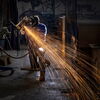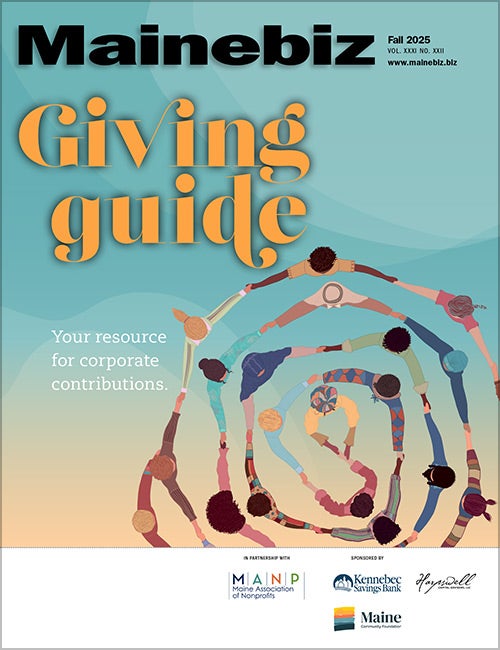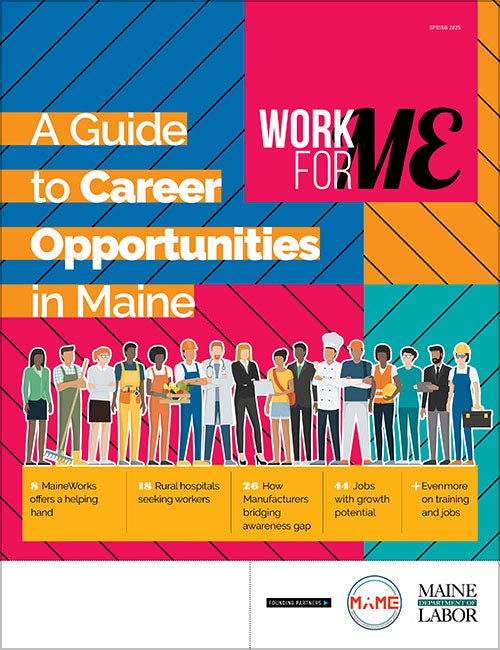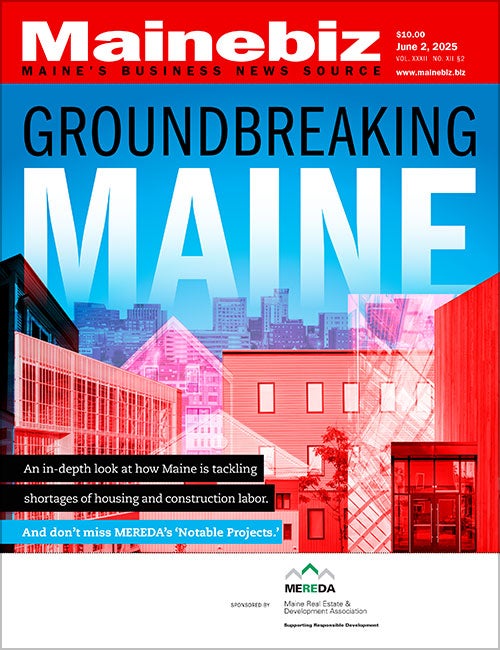On the Record: New head of Manufacturers Association of Maine aims to tackle labor challenges
 Photo / Jim Neuger
John Lewis took the helm of the Manufacturers Association of Maine in June.
Photo / Jim Neuger
John Lewis took the helm of the Manufacturers Association of Maine in June.
Bringing more people into Maine’s manufacturing workforce is top of mind for John Lewis, who took the helm of the 300-member Manufacturers Association of Maine in June. He’s had a busy few months and an even busier October packed with events during Manufacturing Month.
Mainebiz: How have you spent the first few months in your new role?
John Lewis: Since June 1, it’s been nonstop. I’ve been meeting members, touring facilities and planning Manufacturing Month. My focus has been turning vision into reality, starting with visibility. Our social media presence has grown significantly, sparking curiosity and re-engagement from both current and former members. Highlights include a trip to Washington, D.C., where MAME and our partners presented our regional training system approach to the White House’s new Office of Shipbuilding. We were asked to produce a white paper to help shape the national strategy, and feedback has been very positive. We also hosted our 36th annual golf tournament, raising nearly 50% more than last year for scholarships supporting young people pursuing manufacturing careers. And of course, Manufacturing Month is underway, raising awareness of both careers in manufacturing and the industry’s economic impact.
MB: How does your workforce development background inform your leadership?
JL: Recruiting and retention is the top challenge for most members. My background building talent pipelines helps bring a data-driven approach, including closing the awareness gap through recruitment marketing — strategic messaging that counters outdated perceptions and highlights the value of manufacturing careers. I also have experience advocating in Augusta, including introducing a bill on education reform and workforce development. Since advocacy is a top priority for members, that perspective is an asset.
MB: Did you ever consider pursuing a career in the trades yourself?
JL: Honestly, no. Even though my father ran his own home improvement business, the constant message was that college was the only path to success. In the 1990s, vocational programs were viewed as less than optimal for students thought to be college-bound. While the pendulum is shifting, there’s still work to do.
MB: What do you see as the biggest challenges facing manufacturers in the state?
JL: Beyond workforce, the cost of doing business is high, especially energy. Labor is usually the largest expense and energy is second. This past session we helped pass LD 1792, which reduced planned rate hikes and spread costs more equitably. Even so, Maine ranks 6th highest in the nation for commercial electricity rates and saw the largest rate increase in the country this past year. Compounding this is a tough regulatory environment that especially challenges small and medium-sized manufacturers to keep pace with new requirements.
MB: How can manufacturers attract the next generation of talent?
JL: It starts with awareness. Without it, there’s no interest — and without interest, there’s no training. But awareness must be paired with the right message, aligned to individual and personal goals and delivered strategically or it’s wasted effort.
MB: What are your plans for giving higher visibility to manufacturing?
JL: Visibility is key — not just with the public, but also in Augusta and Washington. By hosting more events and engaging policymakers directly, we’ll strengthen MAME as a thought leader. For example, we’re planning a gubernatorial forum during our annual summit in May to highlight how candidates view manufacturing’s role in Maine’s economy.
MB: Why is your organization merging with the Maine Composites Alliance?
JL: An aligned mission and values, strength in numbers and reduced duplication. Maine is small, and working together makes us stronger. As the saying goes, a rising tide lifts all boats.
MB: As additive manufacturing and 3D printing gain global traction, how well-positioned are companies in Maine to take part in that market?
JL: Some Maine companies are well-positioned, but challenges remain, including a knowledge gap and the high cost of capital investment. Fortunately, academic partners like the University of Maine and the Roux Institute are helping companies level up. Younger generations are also drawn to high-tech careers, making additive a natural fit to attract talent into both new and legacy manufacturing.
MB: What’s your vision of Maine’s manufacturing sector in five or 10 years?
JL: Growth — growth in workforce, in manufacturers through reshoring, in domestic supply chain capacity and in visibility and public value.














0 Comments